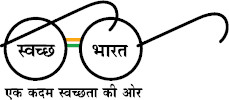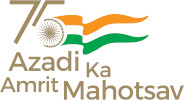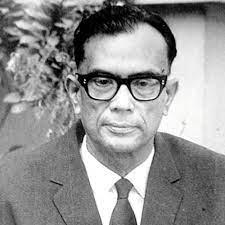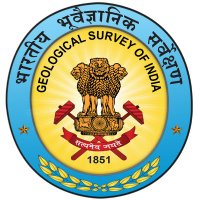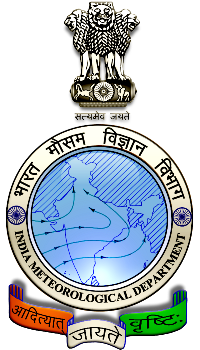A model of indomitable will and total dedication, Prof. Shiba Prasad Chattopadhyay popularly known as Prof. Chatterjee was considered the doyen of Indian Geography who led an inspiring and multifaceted career as a teacher, mentor, writer, researcher, academician, organiser and executor. He was a geologist by academic qualifications, professionally a geographer and a dedicated cartographer as well. Geographical studies and practices in India and other developing countries are greatly indebted to his tenacious involvement and love for the subject.
Prof. Shiba Prasad Chatterjee was born on 22nd February 1903 at Kolkata (erstwhile Calcutta). He had a brilliant academic career. He obtained his master’s degree in Geology in 1926 from Banaras Hindu University and then proceeded to France for higher studies. He had the privilege of carrying out research in geography under the guidance of the then celebrated French Geographer, E.de Martonne on Le Plateau de Meghalaya. This pioneering study earned him D.Lilt, degree from the University De Paris at Sorbonne, and eventually published in 1936. He also obtained Teachers’ Diploma from the University of London. This was followed by a comparative study of the British and the French Education Systems. The University conferred on him a PhD degree in Education after he submitted a dissertation on the same.
After he returned to India in 1930s, Prof. Chatterjee found it essential to introduce Geography in India as a necessary academic discipline. Until then, Geography was taught by teachers of other subjects. Prof. Chatterjee managed to convince the authorities to introduce Geography as a compulsory subject at the school levels and as a university curriculum of the University of Calcutta. Through his persuasion, Geography was introduced in the Teachers' Training Department in 1937, at Honours level in 1939 and Masters level in 1941. Academic excellence was ensured by setting up laboratories and roping in the most distinguished faculty. Over the years, the department produced brilliant geographers who made their mark in academic organisations in the country and abroad. Expectedly, Prof. Chatterjee remained the founder and Chairman of the Department from its inception in 1941 until his retirement in 1967, after which he continued as an Emeritus Professor.
While the syllabi for Geography for schools were well defined, Prof. Chatterjee preferred to retain fluidity in the content for the university courses. He advised his students to read not only textbooks but contemporary journals and reference books from around the world. He also wanted his students to be field geographers rather than arm-chair geographers.
Entrusted by the University Grants Commission, he also undertook the responsibility of designing a model syllabus of Geography for University courses, which was a pioneering work relevant to the mid-1960 period. Later in this life, he also took upon himself to write a series of textbooks of geography for school level students, both in Bengali and in English.
The Calcutta Geographical Society, established in 1936, now known as the Geographical Society of India, was also the brainchild of Prof. S.P. Chatterjee. The research journal of the society, 'Geographical Review of India' was the first of its kind in the country.
The visionary in Prof. S.P. Chatterjee realised that Geography, as a subject, can synthesize the wide spectrum of related information on land, people and resources; that, Geographers can play a significant role in development planning in a newly independent country. The planning teams---dominated by economists, engineers, statisticians---were gradually convinced about the benefits of including Geographers in their teams. The geographer's valuable role as a development planner was firmly established when in 1948, he compiled and published the monograph entitled 'Bengal in Maps'. With this monograph as a model, Prof. S. P. Chatterjee could finally persuade the then Prime Minister of India --- Pandit Jawahar Lal Nehru, a project for compiling and publishing the first-ever 'National Atlas of India' was sanctioned by the Government of India in 1956.
The National Atlas Organisation (NAO), later known as the National Atlas and Thematic Mapping Organisation (NATMO), established in 1956, was Prof. Chatterjee's most important contribution for the study of Geography and Geographers of India. Prof. Chatterjee was appointed the first honorary director of the organisation. Setting up a geographical research body like the National Atlas Organisation was something he was planning and dreaming of since early 1940. This idea was manifest in his landmark presidential address at the Geology and Geography Section of the Indian Science Congress session, held in Madras (Chennai) in January 1940. In this address, he stressed on the necessity of the understanding of Geography in National Planning and indicated the need of a national organisation that will be able to carry our required surveys and prepare different sorts of atlases of the country for the same purpose.
It was not an easy task for a developing country with no state-of-the-art infrastructure or trained personnel. Once again, Prof. Chatterjee's extraordinary organising capacity and will- power went through the test of time when he teamed up along with the retired Director of Survey of India, Sri B.N. Saha and a group of dedicated Geographers under the leadership of Prof. S.P. Dasgupta of the Presidency College. The group worked very hard and within nine months, the first National Atlas of India —Bharat Rashtriya Atlas in Hindi, was published in 1957. The maps were printed at the map printing press of Survey of India. This was an amazing feat and much appreciated in India and abroad. The Royal Geographical Society of London awarded the 'Murchison Grant' to Prof. Chatterjee for this unique contribution to the world of Geography. The Government of India was convinced. The National Atlas Organisation was sanctioned for continuity, for further mapping activities.
The recognition from the Royal Geographical Society projected the image of Prof. Chatterjee and the newly formed National Atlas Organisation as potentially important contributors in the field of thematic cartography. Under Prof. Chatterjee's able guidance, maps of Indian territory in English on essential topics like physiography, population, transport and tourism were compiled, maintaining international standards. Prof. Chatterjee and his team were entrusted with the prestigious project of compiling the National Atlas of India with 300 plates in English, to be organised in eight volumes, which earned them honour in the world community.
Prof. Chatterjee also played an important role in getting India membership of the International Geographical Union (IGU) in 1966, by approaching the Ministry of Education, Government of India for forming of the National Committee for Geography.
From the period of 1964 to 1968, Prof. Chatterjee was the elected President of IGU. Based on the proposal put forth by him in front of the 20th IGU Congress held in London, the 21st Congress was held at New Delhi in 1968. 1172 delegates from 57 countries including India, participated in this unique event, which was a first of its kind held in any Asian, as well as a developing country. Apart from the main session that was held at Vigyan Bhawan, New Delhi from 1st to 8th December 1968, there were fortnight-long Pre-congress and Post-congress sessions held in different locations through the length and breadth of the country. Prof.
Chatterjee and his team aimed to give the local geographers who could not attend the congress, an opportunity to meet their international counterparts which simultaneously allowed the latter to get a more extensive glimpse of India. Also, a very large number of pre and post-congress publications were brought out, which turned out to be the largest number of publications ever brought forth by a Congress organising Committee.
After the success of the 21st Congress, Prof. Chatterjee wasted no time to approach the government for the realisation of two of his dream projects - one for a national organisation to develop atlases, and a national institute for Geography. When he was asked to choose one
between the two, the ardent cartographer's choice took the shape of the National Atlas and Thematic Mapping Organisation (NATMO) . Over the years, NATMO has been able to employ the best of Geographers and cartographers of India, and enjoys an excellent reputation in the country and abroad.
A philosopher at heart, Prof. Chatterjee believed that the essence of Geography as a discipline lies in establishing a harmonic relationship between Man and Nature. His in-depth understanding of Literature, History and Philosophy and his belief that the apparent dichotomy between disciplines merges at a higher level of personal and social development
were infused through his presentations and writings. His remarkable academic inclination allowed him to easily move to and from various branches of Geographical sciences from the theoretical to the applied, from the geomorphological to the political.
Prof. Chatterjee compiled an exhaustive Bibliography titled ' Progress of Geography', which enlists the works and contributions of experts on the Geography of India. It was published in 1963 by the Indian Science Congress Association in 'Fifty Years of Science in India'. This work is still considered indispensable by academicians and researchers. At the time of the 1968 Congress, he along with his team brought out a book titled '50 Years of Indian Geography', which was the prelude to the series of publications brought out by the ICSSR later on under the title 'Survey of Research in Geography'. As a humanist, he believed and stressed upon rebuilding faith and harmony among nations to usher in a new global order post the II World War and fought together against impending global scenarios like global warming. 'Geography and Culture' (1974) and 'Geography in the Cultural and Spiritual Life of a Nation' (1978) both these works by Prof. Chatterjee are important contributions in the field of cultural geography. Both these lectures were delivered at the Summer Courses on Indian Culture and Spirituality initiated by Sri Sathya Sai Baba. Apart from such arduous projects, Prof. Chatterjee has composed numerous articles on Physical Geography, Agricultural/Economic Geography, Cultural Geography, Political Geography, Regional Geography which were regularly published in different academic journals. To encourage young geographers, he also contributed regularly in 'The Observer', a magazine of the Students' Geographical Association, Calcutta.
As a teacher, his reputation spread far and wide. He has served as Visiting Professor at the University of Georgia (Athens) and Austin (Texas) in the USA, at the Moscow University, and the Universities of Paris and Heidenberg in 1963, and at the California State University for the period of 1970-72.
Prof S.P. Chatterjee was a great 'karmayogi' in the true sense of the term. His love for Geography as a subject merged with his sense of duty and responsibility towards his Motherland, which emanated through his continuous efforts towards and achievements in uplifting Indian Geographical explorations and Indian Geographers internationally. In each decision that he took, international technical standards seamlessly integrated with the cultural values and philosophies that were always ingrained within. From coining the name 'Meghalaya' for the cloud-clapped highlands of the Garo-Khasi-Jayantia hills for his doctoral thesis to later naming the Western Ghats as 'Sahyadri', the Eastern Ghats as 'Mahendrgiri', 'Marusthali' for the sandy desert, 'Rajasthan Bagar' for the stony desert and Purvachal for the North-east highlands — Prof Chatterjee displayed an incomparable passion for his traditional cultural inheritance. For his lifelong achievement in raising the status and standard of Indian Geography and his contribution to national planning, the Government of India conferred him the 'Padma Bhushan' in 1985.
Prof. S.P. Chatterjee passed away on 27th February 1989 at Kolkata. His passion for Geography as a subject and practical application of his erudition and wisdom for the betterment of humankind will forever be cherished by the nation.


